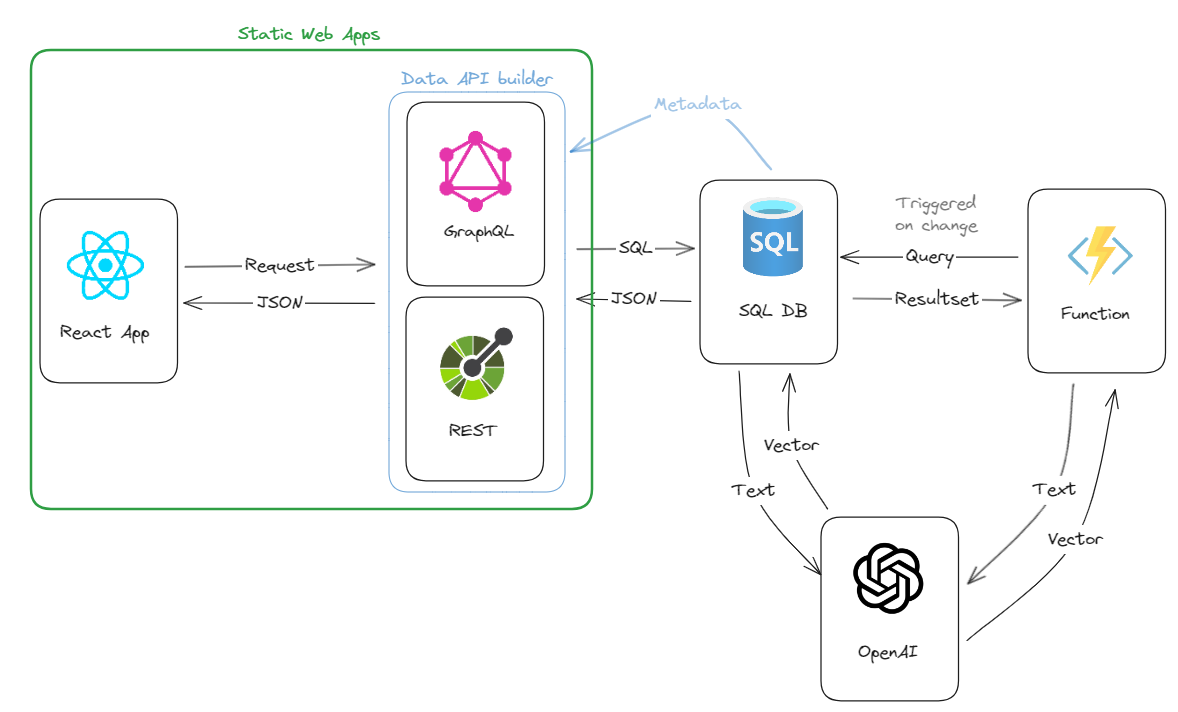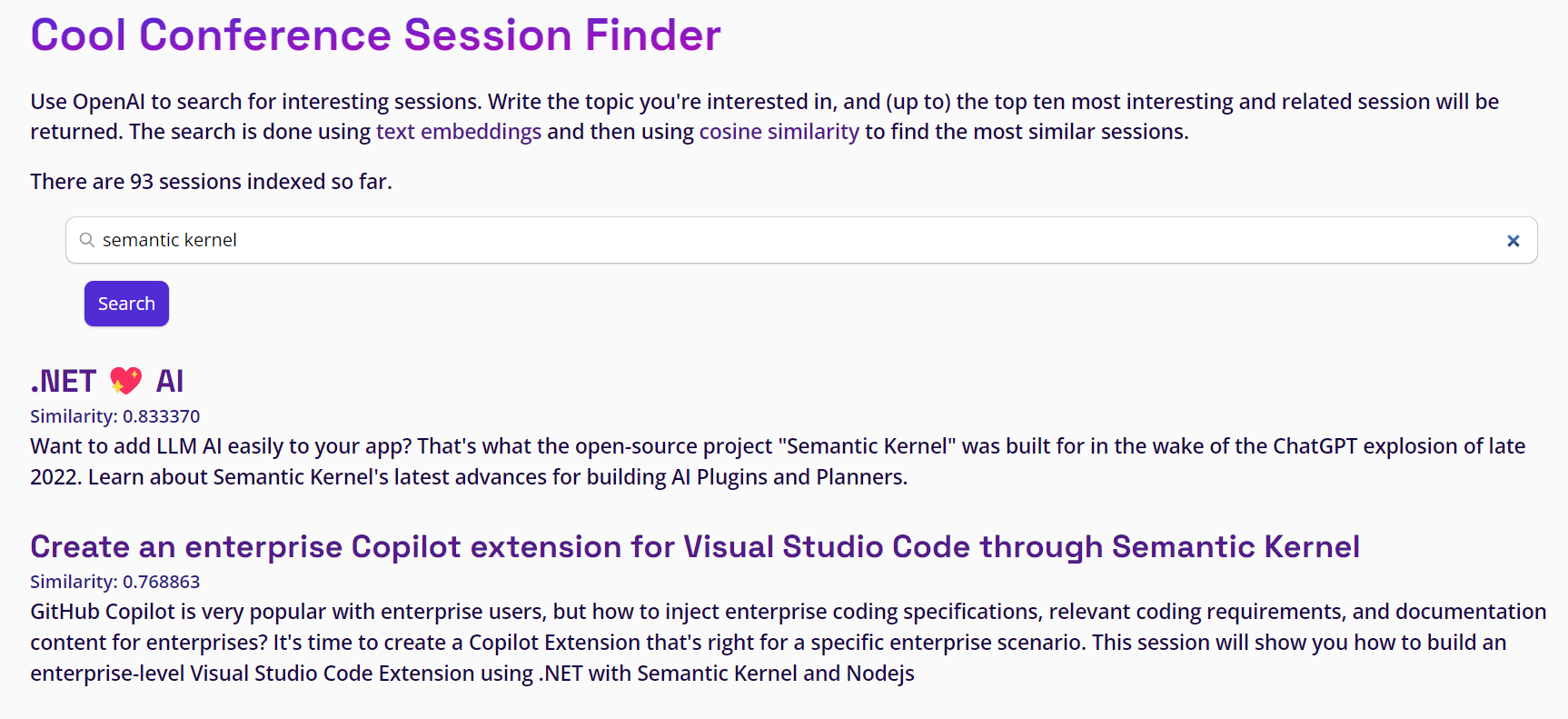| page_type | languages | products | name | description | |||||||||||
|---|---|---|---|---|---|---|---|---|---|---|---|---|---|---|---|
sample |
|
|
Session Recommender using Azure SQL DB, Open AI and Vector Search |
Build a session recommender using Jamstack and Event-Driven architecture, using Azure SQL DB to store and search vectors embeddings generated using OpenAI |
A session recommender built using
For more details on the solution check also the following articles:
- How I built a session recommender in 1 hour using Open AI
- Vector Similarity Search with Azure SQL database and OpenAI
The Azure Developer CLI (azd) is a developer-centric command-line interface (CLI) tool for creating Azure applications.
You need to install it before running and deploying with the Azure Developer CLI.
powershell -ex AllSigned -c "Invoke-RestMethod 'https://aka.ms/install-azd.ps1' | Invoke-Expression"curl -fsSL https://aka.ms/install-azd.sh | bash
After logging in with the following command, you will be able to use azd cli to quickly provision and deploy the application.
Make sure AZD CLI can access Azure resources. You can use the following command to log in to Azure:
azd auth login
Execute the azd init command to initialize the environment.
Note: Resource Group Scoped Deployment is currently an alpha feature, so please run the following command before running command azd up.
azd config set alpha.resourceGroupDeployments on
Then download the template to the current directory:
azd init -t Azure-Samples/azure-sql-db-session-recommender
According to the prompt, enter an environment name.
Run azd up to provision all the resources to Azure and deploy the code to those resources.
azd up
According to the prompt, select subscription and location, these are the necessary parameters when you create resources. After that, choose a resource group or create a new resource group. Wait a moment for the resource deployment to complete, click the Website endpoint and you will see the web app page.
Note: Make sure to pick a region where all services are available like, for example, West Europe or East US 2
Add a new row to the Sessions table using the following SQL statement:
insert into web.sessions
(title, abstract)
values
('Building a session recommender using OpenAI and Azure SQL', 'In this fun and demo-driven session you’ll learn how to integrate Azure SQL with OpenAI to generate text embeddings, store them in the database, index them and calculate cosine distance to build a session recommender. And once that is done, you’ll publish it as a REST and GraphQL API to be consumed by a modern JavaScript frontend. Sounds pretty cool, uh? Well, it is!')immediately the deployed Azure Function will get executed in response to the INSERT statement. The Azure Function will call the OpenAI service to generate the text embedding for the session title and abstract, and then store the embedding in the database, specifically in the web.session_abstract_embeddings table.
select * from web.session_abstract_embeddingsYou can now open the URL associated with the created Static Web App to see the session recommender in action. You can get the URL from the Static Web App overview page in the Azure portal.
The whole solution can be executed locally, using Static Web App CLI and Azure Function CLI.
Install the required node packages needed by the fronted:
cd client
npm install
once finished, create a ./func/local.settings.json and .env starting from provided samples files, and fill out the settings using the correct values for your environment.
From the sample root folder run:
swa start --app-location ./client --data-api-location ./swa-db-connections/The folder api contains a sample function to customize the authentication process as described in the Custom authentication in Azure Static Web Apps article. The function will add any user with a @microsoft.com to the microsoft role. Data API builder can be configured to allow acceess to a certain API only to users with a certain role, for example:
"permissions": [
{
"role": "microsoft",
"actions": [{
"action": "execute"
}]
}
]This step is optional and is provided mainly as an example on how to use custom authentication with SWA and DAB. It is not used in the solution.

